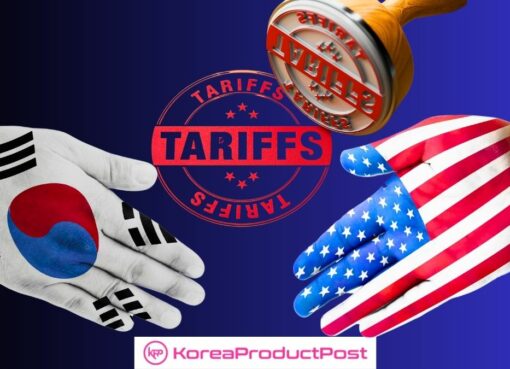U.S. President Donald Trump’s tariffs strike again and this time on all foreign-produced movies, striking uncertainty on the future of the Korean content industry.
Aiming to rejuvenate the American movie industry, Hollywood, and save American jobs, the 100% tariff imposition on movies produced outside the U.S. will impact the global entertainment sector. This proposal has sent ripples through the burgeoning Korean entertainment and K-content sector which has gained international acclaim through collaborations with platforms like Netflix and Disney+.
To that effect, it is still unclear as to how these tariffs by Trump will impact the Korean content industry. Movies aren’t really physical goods so the rules are different. They are essentially digital content and are available on streaming platforms.
Immediate Impact on Korean Film Exports
According to the Korean Film Council (KOFIC), the United States accounted for approximately 10% of Korea’s film exports in 2024. It amounts to $4.21 million out of a total $41.93 million movie exports from the country. While this represents a modest share, it is still the third-biggest export recipient country.
The U.S. market holds significant symbolic and strategic value for Korean filmmakers. Success in the American market often translates to increased global recognition and opportunities for co-productions.
KOFIC believes this tariff policy will not have a significant impact in the short term on the Korean movie industry. But they are still like arthouse films in Korea. According to the director of KOFIC’s Policy R&D Team, Yun Ha says that even with imposed tariffs, Korean content ticket prices will not increase significantly.
Concerns Over Long-Term Growth and Global Expansion
Industry insiders express concerns that the proposed tariffs could hinder the global expansion of Korean films and filmmakers. The U.S. market serves as a critical platform for determining global box office performance and critical reception. A successful release in the U.S. can significantly boost a film’s brand value and marketing impact.
Yun Ha warned that this development might temporarily halt the current expansion of Korean films through streaming platforms. He also expressed concern that the measure could be used politically to challenge Korean government’s support policies for its film industry.



Potential Political Implications
The Motion Picture Association and other U.S. industry organizations have raised objections to Korea’s screen quota system. It mandates that theaters show Korean movies for a certain number of days each year. In March, they submitted comments to the U.S. Trade Representative (USTR) advocating for the reduction or removal of this quota.
The quota was 146 days per year but was reduced to 73 days in 2006. It was set up decades ago to protect domestic movies from the dominance of Hollywood blockbusters.
The proposed tariffs can potentially serve as a bargaining chip in trade negotiations, potentially pressuring South Korea to alter its domestic film policies.
Embracing Enter-tech to Mitigate Risks
To reduce future risks from tariffs, some industry experts suggest that South Korea should develop itself as an entertainment technology (enter-tech) hub. This will involve focusing on advanced production, investment, and distribution ecosystems. It would include virtual production, AI-driven editing, dubbing, and cloud-based technologies.
Jung Han, CEO of the media outlet K EnterTech Hub and an adviser to U.S.-based Korean content streamer KOCOWA, emphasized the need for the Korean film and television sector to reassess its reliance on American distribution and financing. By embracing cutting-edge innovations, studios can reduce their dependency on location-based shooting and achieve greater efficiency.
Han highlighted that virtual production technology enables filmmakers to create realistic backgrounds in the studio, eliminating the need for on-location shoots. Additionally, AI-driven workflows can expedite previsualization, script breakdowns, and post-production processes. It will make the creative endeavors more flexible and less geographically constrained.
Join us on an exciting journey to explore the vibrant world of Korean lifestyle – from the latest beauty tips to the hottest tech and so much more on Facebook, Twitter, LinkedIn, and Flipboard.









